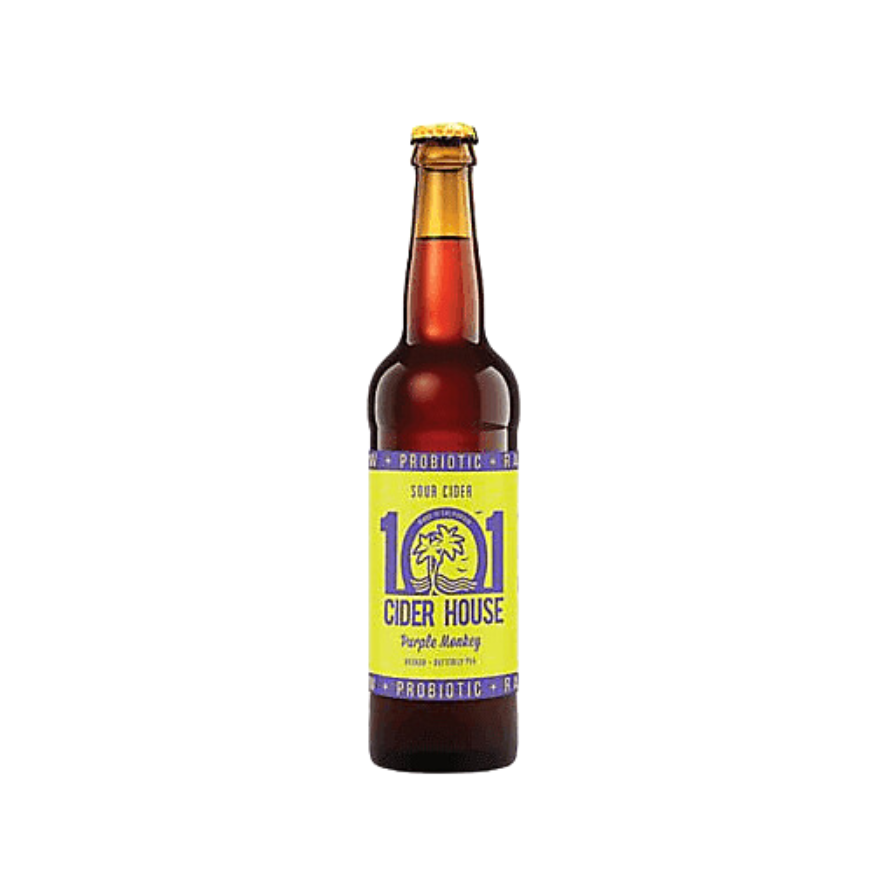Description
101 Cider House Purple Monkey
History
The earliest records of cidermaking date back to the first Century BC, when the Roman armies arrived in Britain. Recipes explaining how to make cider soon spread to other parts of the Roman Empire which, at that time, included territories all around the Mediterranean, from Tunisia to northern France and Portugal.
As knowledge of distillation became more widespread, so cider-based spirits (applejack and apple brandy) began to appear. The most famous of these is French – more properly, Norman – Calvados.
Production methods and styles
The fruit is harvested in autumn, traditionally by hand but now increasingly by using mechanical, tractor-like harvesters. Some producers favor maceration prior to pressing (which tends to extract more tannins from the skins) but in the main, the apply juice is extracted in a press or mill, and then begins fermentation – the conversion of sugars into alcohol (by either cultured or naturally occurring yeast).
The pulp (pomace) left behind is either discarded or used for distillation.
Cider production methods vary from region to region and style to style. They dictate not just the cider’s alcoholic strength, but also its depth of color and whether it is clear or cloudy, still or sparkling.
Cider regions
The most developed and one of the more historic regions for cider production is England – the British are the biggest consumers of cider per capita in the world. Southwest English counties such as Somerset, Devon and Cornwall have a long history of cider production, as does the East Anglian county of Suffolk and also Kent, in the southeast of the country.
Further afield, cider is very popular in Ireland and throughout Europe, mainly in regions with a Gaelic or Celtic connection, particularly Brittany, Normandy (the home of Calvados), the Basque Country, Asturias and Galicia. In Germany, the Pfalz and Rheinhessen regions produce apfelwein alongside their regular grape-based wines.





Reviews
There are no reviews yet.